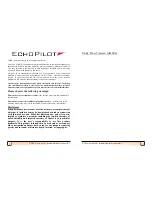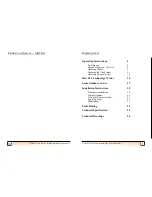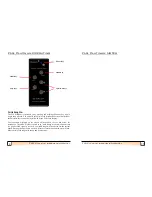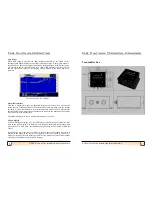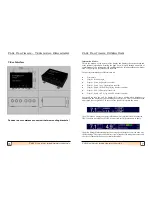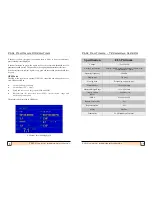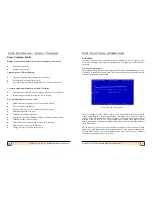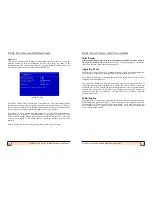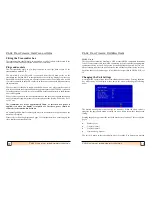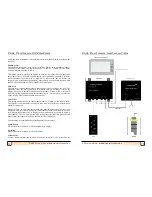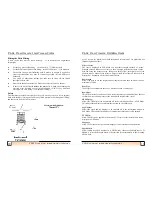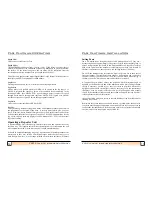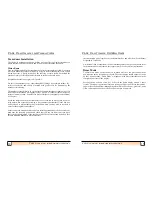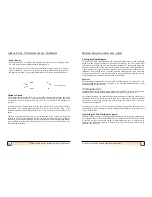
24
FLS
Platinum
Instruction Manual
FLS Platinum Installation
Instructions
Some Common Faults
Display or transmitter box doesn
’
t switch on (no display or LEDs lit):
-
•
Battery not connected
•
Battery voltage too low
Transmitter box LED not flashing:
-
•
No power to display unit or display not switched on
•
12m data cable not connected properly
•
Power not cleanly applied to transmitter box
-
re
-
make connection
No seabed visible and transmitter box LED is flashing:
-
•
Transducer not connected (or not connected properly)
-
use Test Mode
•
Incorrect range selected (try using the
‘
Auto
’
setting!)
Poor seabed picture or excessive noise:
-
•
Suitable range not selected (try to fill screen with seabed)
•
Poor connection of transducer
•
Battery voltage low
-
use Test Mode to check Tx voltage
•
Transducer mounted at an angle
•
Turbulence at transducer location
•
Interference from other 200KHz sounders (same boat or other boats)
•
Turbulence/wake from other boats
•
Polluted water or Plankton bloom (usually early summer)
•
Dirty transducer/covered with barnacles
•
Choppy sea state
-
can cause surface noise
FLS Platinum - Fault Finding
9
FLS Platinum Instruction Manual
Test Mode
This mode allows the user to obtain diagnostic data about the unit should a fault
occur with the display, transmitter box or transducer. The page key scrolls between 3
test pages.
A
-
Scan and Angle Graphs
These graphs display the sonar signal strength and associated calculated angles over a
30m range. If the depth is greater than 30m, these graphs will not show the received
seabed echo and angle of the seabed.
FLS Platinum Operating
The A
-
Scan and Angle Graphs
The A
-
scan graph of a flat seabed will show a low signal level up to the depth of the
seabed and should then increase significantly to a higher lever when the sebed is
reached. This is the returned echo from the seabed. The angle graph will show angles
between 0 and 90 degrees. The angles should start at about 60
-
70 degrees at the
seabed depth and will decrease gradually as the range of the received echo increases
(for a flat seabed).
The up arrow key allows the user to scroll between the 3 receive channels (A
-
Scan
graph only). Each channel must be displaying similar A
-
Scan graphs for the angle to
be calculated correctly. Low or very different echo levels on any of the 3 channels
will cause poor performance of the FLS unit.


